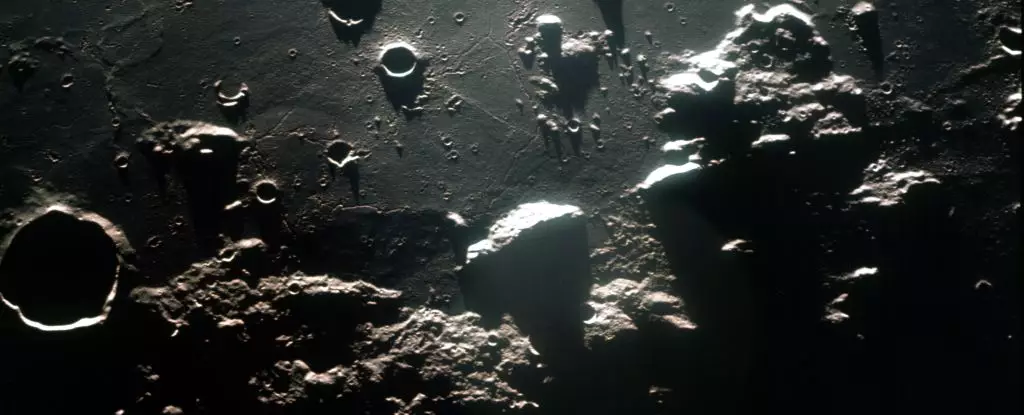The search for water on the Moon has taken a new turn as recent analysis suggests that the lunar craters, which were once considered potential reservoirs of ancient water ice, are actually too young to retain such reserves. Physicist Norbert Schorghofer from the Planetary Science Institute and astrophysicist Raluca Rufu from the Southwest Research Institute have discovered that most craters containing permanent pockets of shadow, a focal point for future Moon exploration, are younger than 2.2 billion years. This finding challenges previous predictions and drastically alters estimates of the quantity of water ice on the Moon. It appears that ancient water ice reservoirs are no longer expected to be found.
Although the existence of water on the Moon is widely acknowledged by scientists, the primary question has always been the quantity and location of this water. In recent years, researchers have turned their attention to permanently shadowed regions (PSRs), particularly deep craters, as potential sources of water ice. These PSRs, shielded from sunlight and characterized by incredibly low temperatures reaching as low as -163 degrees Celsius (-260 degrees Fahrenheit), were considered to be capable of accumulating water ice over billions of years. Estimates suggested that these craters could contain patches of water ice several meters thick. However, Schorghofer and Rufu’s analysis indicates that the moon’s PSRs have not been shielded from the sun for a sufficient length of time to accumulate such thick ice layers.
The study conducted by Schorghofer and Rufu builds on a previous paper published a year ago, which aimed to reconcile the rate of the Moon’s recession from Earth (1.5 inches per year) with the Moon’s age (4.5 billion years). This previous research highlighted a discrepancy between the two figures and proposed variations in the lunar recession rate due to resonance between Earth and the Moon, as well as changes in the orientation of the Moon’s axis. Recognizing the implications of these findings, Schorghofer and Rufu focused their work on assessing the relevance of the previous study for the search for water ice on the Moon.
Understanding the Late Heavy Bombardment
Scientists believe that in the early stages of the Solar System, approximately 3.8 billion years ago, the inner regions encountered a period of intense bombardment by comets and asteroids known as the Late Heavy Bombardment. During this period, the Moon, along with Mercury, Venus, Earth, and Mars, would have been heavily impacted. The heat and volcanism of the early Moon would have caused the release of water from its interior. If PSRs existed during this time, they might have trapped a considerable amount of water. However, Schorghofer and Rufu’s analysis suggests that the PSRs are much younger based on recent models of the Moon’s spin-axis reorientation and the evolution of the Earth-Moon distance. Consequently, any ice within these craters must also be relatively recent.
Implications for Lunar Missions
The implications of this discovery extend to future lunar missions, particularly NASA’s crewed Artemis III mission, which is selecting landing sites based on the proximity of PSRs. The positive aspect of this finding is that evidence of water ice has already been found in some PSRs. By determining the age of the craters, scientists can better identify potential landing sites for both crewed and uncrewed missions. Older craters might contain more water than younger ones, providing valuable information for future explorations.
The analysis conducted by Schorghofer and Rufu challenges previous assumptions about the Moon’s water ice reservoirs. The discovery that most lunar craters are younger than 2.2 billion years implies that ancient water ice reservoirs no longer exist on the Moon. However, this new perspective opens up opportunities for further research and exploration, as scientists can now focus on identifying older craters with potentially higher water ice content. The search for water ice on the Moon continues to fuel curiosity and pave the way for future lunar missions.



Leave a Reply